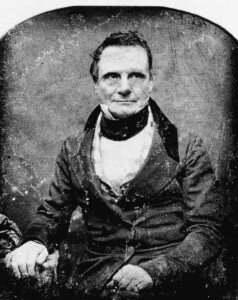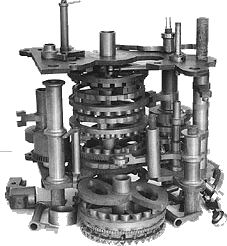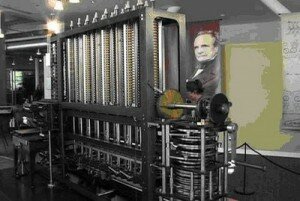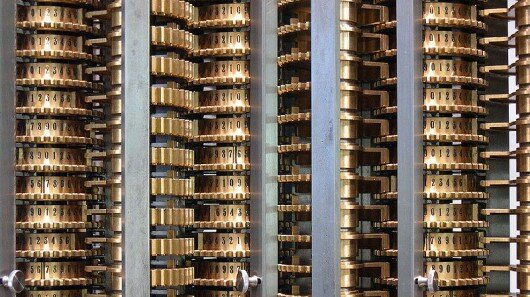No.1 of an Occasional Series
Anyone with even a scrap of imagination or ambition has heroes. Individuals who’s lives and deeds have influenced, informed or inspired our own. The nature and calling of our heroes has changed over the years – a century ago, they were military figures and explorers, Nelson, Clive of India, Shackleton, Robert Falcon Scott. To my father’s generation in the post-war and cold-war years, conflict had lost it’s luster, and military men became a necessary evil rather than something to be celebrated. There were however still frontiers to breach, mountains unconquered, and oceans uncrossed. My dad’s heroes, and therefore mine, were Edmund Hillary. Thor Heyerdahl. Sir Francis Chichester, Jacques Piccard and Chuck Yeager. In the sixties and seventies, a new breed of hero emerged. British working class kids, myself included, decorated our bedroom walls with new sporting icons. Bobby Charlton, Graham Hill (who I think my dad secretly modeled himself on), George Best, Barry Sheene. We thrilled to their exploits. Copied their clothes and adopted their haircuts. (Well not Bobby Charlton’s obviously.) Then of course, we discovered pop music and everything changed again. Down came the football posters and the racing cars and up went T Rex, Slade and umm Garry Glitter – ok, with the benefit of hindsight not the best choice of role model for a young man, either ethically or sartorially, but you have to admit the shoes were good. A few years on I traded my platform boots for denim and cheesecloth and the glam-rock bling was superseded by the more cerebral iconography of Roger Dean, and the album cover art of Led Zeppelin, Pink Floyd and Emerson, Lake & Palmer.
Sadly I no longer have posters on my bedroom wall. But I still have heroes. Some of my childhood favorites are still there of course, added to which are an eclectic group of Individuals (with a capital ‘I’) that I have adopted as my cultural, intellectual and spiritual touch-stones along the way. Here, in no particular order, are a few of them.
Charles Babbage
INVENTOR 1791-1871
Twenty five years ago, I became enamored of the emerging new technology of personal computers. I owned one as soon as I could possibly afford to, and read numerous books on the early history of computing. I was surprised to learn, that the concept of a programmable, multipurpose computing machine had been around for much longer than most of us imagined.
 The name Charles Babbage cropped up time and time again, and I became fascinated by this extraordinary English gentleman and his Victorian computing machines. I spent a couple of years researching his life, and even started writing a book about him. Needless to say, like most of my personal projects, I ran out of steam and it was never finished.
The name Charles Babbage cropped up time and time again, and I became fascinated by this extraordinary English gentleman and his Victorian computing machines. I spent a couple of years researching his life, and even started writing a book about him. Needless to say, like most of my personal projects, I ran out of steam and it was never finished.
Babbage was hopeless at finishing things too. In fact, like several of my personal heroes, he was a deeply flawed man. Detached. Aloof. Obsessive. Intolerant. Irascible. The archetypal grumpy old bastard and proto-geek.
If not actually barking mad, he was certainly wildly eccentric. Amongst the various clubs and clandestine institutions he either formed or frequented as an undergraduate at Cambridge were The Ghost Club, dedicated to the pursuit of supernatural phenomena, and my personal favorite The Extraction Club, where initiates took a vow, and made elaborate plans to spring any of their membership from the mad house, should any of them ever be committed for insanity.
At one point his clearly intense, if unruly intellect settles briefly upon the problem of broken factory windows. He actually published a paper in 1857 entitled “A Table of the Relative Frequency of the Causes of Breakage of Plate Glass Windows”. In this groundbreaking, or should that be glass-breaking document, Babbage noted that of 464 broken panes, 14 were caused by “drunken men, women or boys”. Charles didn’t care for children much. In 1865, he embarked upon a public crusade to have the popular childhood pastime of hoop-rolling banned from the streets as he considered it rowdy and dangerous. He also has a thing about organ-grinders and street musicians, who he also unsuccessfully tried to have banished.
 These minor diversions and distractions aside, Babbage dedicated most of his long life and personal wealth to his calculating engines. Although his solution was devilishly complex, his idea was simplicity itself. In Victorian times, indeed right up until the invention of the electronic calculator, mathematicians, engineers, bankers, soldiers, sailors and tradesman referred to books of mathematical tables to perform everyday calculations. There were tables for everything from logarithms to interest rates, maritime navigation to ballistic shell trajectories. These tomes were calculated and compiled by hundreds of largely unskilled clerks called ‘computers’. Then an equally unreliable and accident prone cadre of printers would reproduce the calculations in published form. The resulting tables were littered with mistakes and erroneous values that could result in anything from minor inconvenience to considerable fiscal losses or even loss of life.
These minor diversions and distractions aside, Babbage dedicated most of his long life and personal wealth to his calculating engines. Although his solution was devilishly complex, his idea was simplicity itself. In Victorian times, indeed right up until the invention of the electronic calculator, mathematicians, engineers, bankers, soldiers, sailors and tradesman referred to books of mathematical tables to perform everyday calculations. There were tables for everything from logarithms to interest rates, maritime navigation to ballistic shell trajectories. These tomes were calculated and compiled by hundreds of largely unskilled clerks called ‘computers’. Then an equally unreliable and accident prone cadre of printers would reproduce the calculations in published form. The resulting tables were littered with mistakes and erroneous values that could result in anything from minor inconvenience to considerable fiscal losses or even loss of life.
Babbage set out to design and build a machine that would calculate and even print these essential tables completely automatically and without human intervention. Using the technology of his day, brass gears and cranks, levers and cams, he designed an elegant and beautiful device The Difference Engine. Funded by the admiralty, Babbage engages skilled engineers and machinists to manufacture components to his intricate design.
 Babbage’s greatest flaw, and ultimately his undoing, was his relentless perfectionism. Frustrated by his workman’s inability to machine parts to the exacting tolerances that his specifications demanded, he continually refined his designs and manufacturing processes. He would spend months and years perfecting a mechanism, only to later abandon it in favor of a new improved design. Eventually his backers tired of the constant delays and cut his funding. He continued to work on The Difference Engine for the rest of his life, and although a fully working engine was never completed in his lifetime, Babbage left hundreds of detailed and beautiful engineering drawings, manuscripts, countless notebooks and several working fragments and demonstration pieces of his creation.
Babbage’s greatest flaw, and ultimately his undoing, was his relentless perfectionism. Frustrated by his workman’s inability to machine parts to the exacting tolerances that his specifications demanded, he continually refined his designs and manufacturing processes. He would spend months and years perfecting a mechanism, only to later abandon it in favor of a new improved design. Eventually his backers tired of the constant delays and cut his funding. He continued to work on The Difference Engine for the rest of his life, and although a fully working engine was never completed in his lifetime, Babbage left hundreds of detailed and beautiful engineering drawings, manuscripts, countless notebooks and several working fragments and demonstration pieces of his creation.
Between 1989 and 1991 the London Science Museum undertook a full size working reconstruction of the Babbage Difference Engine No.2. using the original working drawings, and employing only period correct fabrication techniques and materials. 150 years after its design, and on the bicentenary of Babbage’s birth, The Difference Engine was finally realised. It comprises over 8,000 parts, weighs five tonnes, and is eleven feet long. When it was (literally) cranked up for the first time it performed flawlessly, calculating values to an accuracy 31 digits, far more than most modern pocket calculators. Babbage’s design was vindicated. It’s a fascinating thought experiment to speculate how different things may have been had he succeeded to construct a working, steam powered computer in the mid nineteenth century. Would the information technology revolution have happened a hundred years earlier than it did? What would the world be like now?
I made a pilgrimage to London from Edinburgh to see The Difference Engine the week it was unveiled. It was so beautiful, so precise, so perfect, I was moved to tears.
Charles Babbage was definitely my kind of guy.




What about Ada Lovelace?
Ah yes! The Enchanress of Numbers. What a woman! (And a bit of a babe if her portraits are anything to go by). Im sure ou probably know all this, but Ada corresponded regularly with CB and hung out in the same social circles. She wrote a detailed method for calculating Bernoulli number sequences on Babbages ambitious but unrealized Analytical Engine. Generally gets the bragging rights for having written the first computer program, which is rather lovely given that it would be annother century before anyone built a computer. Oh yes, and she was Lord Byron’s daughter to boot.
Did you trot that stuff about Ada Lovelace out without looking at Wikipedia? I’m feeling curiously ill-educated.
Ada and I go back a long way. Unfortunately, what with her being 145 years older than me, the age difference was just too great. It was never going to work out between us. Also, her dad was a bit of a wanker. And yes, I did Wiki her, but mainly to find a good picture.
Lord Byron, is perhaps ironically credited with one wonderful piece I know from Alan’s place. I don’t often remember poetry, except for Jabbawokky
O Cloacina, Goddess of this place,
Look on thy suppliants with a smiling face.
Soft, yet cohesive let their offerings flow,
Not rashly swift nor insolently slow.
On the loo wall of course
Byron? A wanker? Surely some mistake?
Or was that Byron. I don’t know Will, I have to confess to being a bit out of my depth here…
Dude, keep writing bout the things that have always occurred to you but you haven’t had the time for. Don’t let your memory be resolved with just the process of living (I’m putting on my socks – or variations thereof).
This is it .
Take pleasure in you life – whether it is forty-something at its end or one hundred and forty. I’m as interested in your thoughts as I am about your experience. You write brilliantly. Share.